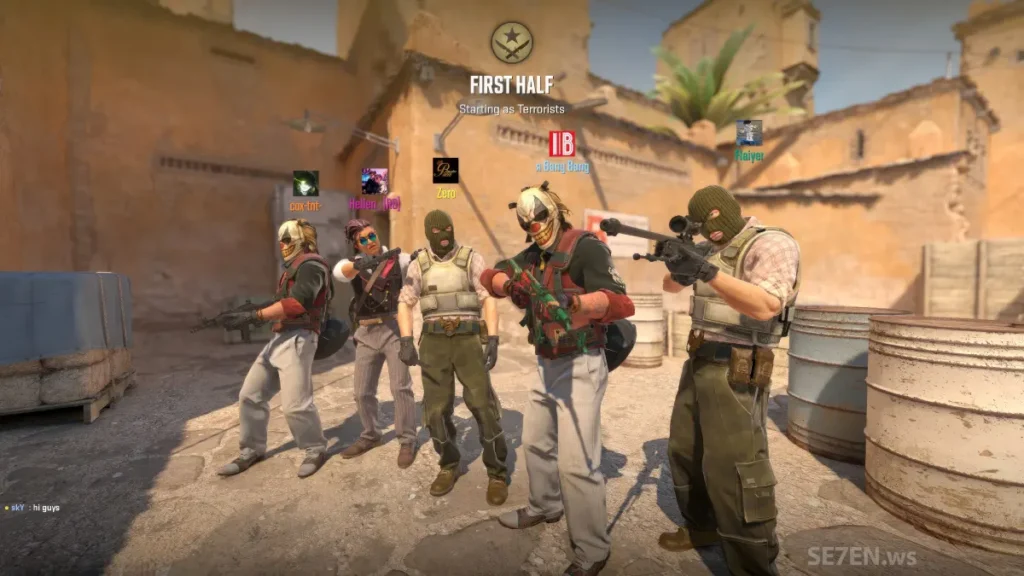Best Electronics Insights
Your go-to source for the latest in electronics news and reviews.
Dancing in the Smoke: CS2 T-Side Strategies that Keep Enemies Guessing
Unleash chaos with clever T-Side strategies in CS2! Discover game-changing moves that keep your enemies guessing and claim victory.
Mastering the Art of Deception: Top T-Side Strategies in CS2
In Counter-Strike 2 (CS2), mastering the art of deception is vital for the Terrorist side (T-side) to secure victories. Deception strategies not only involve outsmarting your opponents but also enhancing your team’s overall game plan. One effective method is utilizing the fake push; this involves creating the illusion of an assault on one bombsite while your team secretly gathers to attack another. To execute this tactic successfully, communication is crucial, and players should demonstrate believable bombsite pressure. This can range from throwing grenades and making noise to utilizing the map's terrain for strategic positioning.
Another key strategy is the information play, wherein players send one or two teammates to scout the enemy's defensive setup. By creating distractions or engaging in faux engagements, the remaining T-side players are able to gather valuable intel while preventing the defenders from rotating freely. A well-timed smoke grenade can obstruct vision and make it easier for your team to slip past unsuspecting enemies. In CS2, it’s essential for players to capitalize on the element of surprise; thus, employing deception not only confuses opponents but can significantly sway the momentum of the match in your favor.

Counter-Strike is a popular team-based first-person shooter game that has captivated players worldwide. In the latest iteration, players can explore various gameplay mechanics, including the new CS2 recoil case, which adds depth to weapon handling and aiming strategies. The competitive nature of the game fosters a vibrant esports scene, making it a favorite among both casual and professional gamers.
Smoke and Mirrors: How to Use Utility for Tactical Advantages in CS2
Smoke and mirrors play a pivotal role in gaining tactical advantages in CS2. The clever use of utility such as smoke grenades, flashbangs, and Molotov cocktails can drastically alter the course of a match. By deploying smoke grenades effectively, players can obstruct enemy vision, forcing them into confined spaces and making them vulnerable to ambushes. For instance, players can create a smoke wall to cover their team’s movement towards a bombsite, providing crucial seconds to execute a strategy without being spotted.
In addition to smoke grenades, utilizing flashbangs can effectively blind opponents and create opportunities for strategic plays. Timing is essential; throwing a flashbang just as you engage an opponent can negate their reaction time, giving you a tactical edge. Remember to communicate with your team and call out your utility usage, as coordination enhances the overall effectiveness of your tactics. By mastering the art of deception, leveraging utility such as smoke and flash, and keeping opponents guessing, you can ensure victory in the high-stakes environment of CS2.
What Makes a Winning T-Side Strategy in CS2?
Developing a winning T-Side strategy in CS2 requires a blend of teamwork, effective communication, and a deep understanding of map control. Players should prioritize strategic positioning to gain advantageous angles against the enemy. Always start by utilizing your utility effectively — flashbangs and smokes can create openings for your team. A solid approach often involves executing default plays to gather information, divide enemy resources, and pave the way for a well-coordinated push. Communication is key; call out enemy positions and relay your plans to ensure everyone is on the same page.
Another critical aspect of crafting a successful T-Side strategy is adaptability and reading the game. It's essential to recognize when to shift gears and adjust tactics based on the opponents' setup. For instance, if the opposing team is stacking a specific site, consider rotating to find an unguarded area of the map. Additionally, maintaining a robust economy is vital. Players should manage their credits wisely to ensure they can afford necessary equipment when crucial rounds arrive. In summary, a winning T-Side strategy in CS2 combines effective communication, tactical execution, and the ability to adapt to the evolving dynamics of the match.